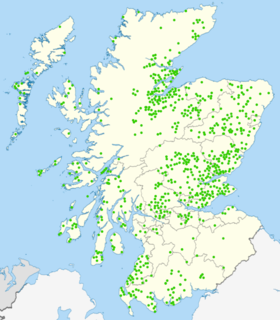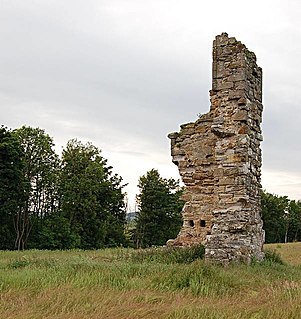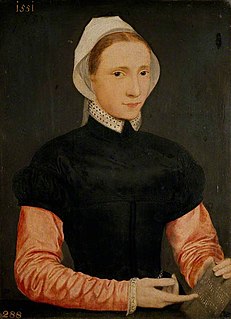
Wemyss Castle is situated in Wemyss on the sea cliffs between the villages of East Wemyss and West Wemyss in Fife, Scotland.
Pictish is an extinct Brittonic language of the Celtic language family that was spoken by the Picts, the people of eastern and northern Scotland from Late Antiquity to the Early Middle Ages. Virtually no direct attestations of Pictish remain, short of a limited number of geographical and personal names found on monuments and the contemporary records in the area controlled by the kingdoms of the Picts, dating to the early medieval period. Such evidence, however, points strongly to the language being an Insular Celtic language related to the Brittonic language spoken prior to Anglo-Saxon settlement in what is now southern Scotland, England, and Wales, but this is contested.

Crail ; Scottish Gaelic: Cathair Aile) is a former royal burgh, parish and community council area in the East Neuk of Fife, Scotland.

Kinghorn is a town and parish in Fife, Scotland. A seaside resort with two beaches, Kinghorn Beach and Pettycur Bay, plus a fishing port, it stands on the north shore of the Firth of Forth, opposite Edinburgh. According to the 2008 population estimate, the town has a population of 2,930.

Dunfermline Palace is a ruined former Scottish royal palace and important tourist attraction in Dunfermline, Fife, Scotland. It is currently, along with other buildings of the adjacent Dunfermline Abbey, under the care of Historic Environment Scotland as a scheduled monument.
George Leslie, 4th Earl of Rothes was a Scottish nobleman and diplomat.

Inchkeith is an island in the Firth of Forth, Scotland, administratively part of the Fife council area.

Inchgarvie or Inch Garvie is a small, uninhabited island in the Firth of Forth. On the rocks around the island sit four caissons that make up the foundations of the Forth Bridge.
Abercrombie is a village in Fife, Scotland.
Fothriff or Fothrif was a province of Scotland in the Middle Ages. It is often paired with Fife, not only in De Situ Albanie, but also in early charters.

Hallyards Castle, located to the north-west of the village of Auchtertool, is reputed to have been a hunting seat of Malcolm Canmore. With the establishment of the Roman Church, Halyards became the local residence of the Bishops of Dunkeld; it remained so until the first lay proprietor took possession in 1539.
Newburn is a civil parish in the County of Fife in Scotland. It is located on the north coast of the Firth of Forth and bounded by the parishes of Kilconquhar and Largo. It was originally a rural parish with no major settlement, but with the development of Leven as a seaside resort in the late 19th century, the population of the parish grew considerably.

Seton Palace was situated in East Lothian, a few miles south-east of Edinburgh near the town of Prestonpans. Often regarded as the most desirable Scottish residence of the sixteenth and seventeenth centuries, the palace was erected in the 15th century by George, 4th Lord Seton.

Scottish toponymy derives from the languages of Scotland. The toponymy varies in each region, reflecting the linguistic history of each part of the country.

Scoonie is a settlement and parish in Fife, Scotland, the parish contains the town of Leven. It is bordered on the north by the parishes of Kettle and Ceres, on the east by the parish of Largo, on the south by the parishes of Markinch and Wemyss, and on the west by the parishes of Markinch and Kennoway. It extends about 4+1⁄2 miles north to south. Its width varies between 5⁄8 and 2+3⁄4 mi . The parish is on the coast of the Firth of Forth, with a coastline of about 1+1⁄2 mi (2.4 km) The area of the parish is 4,107 acres.

Strathtyrum is a 400-acre (160 ha) country estate in the north-western outskirts of St Andrews, Fife, Scotland. It is accessed via the A91.

Cameron is a parish in east Fife, Scotland, 3½ miles south-west of St Andrews.
David Seton of Parbroath was a Scottish courtier and administrator.

Helen Leslie, Lady Newbattle (1520-1594) was a Scottish aristocrat and supporter of Mary, Queen of Scots.
Henry Wardlaw of Torrie was a Scottish landowner and courtier.













